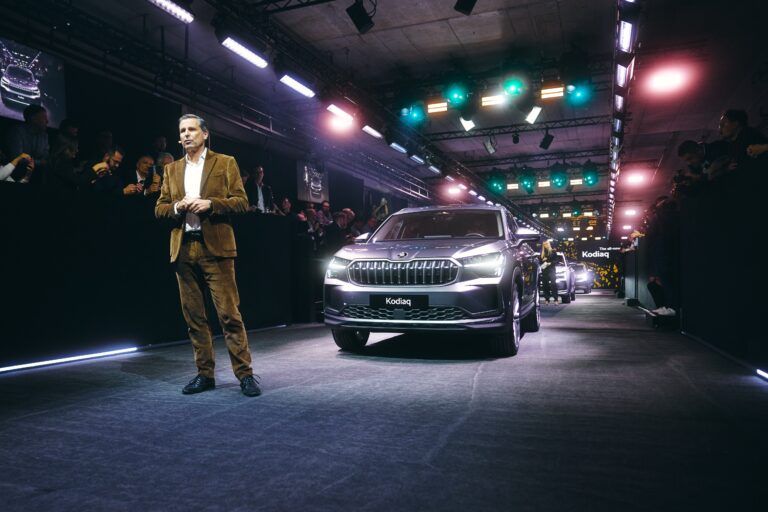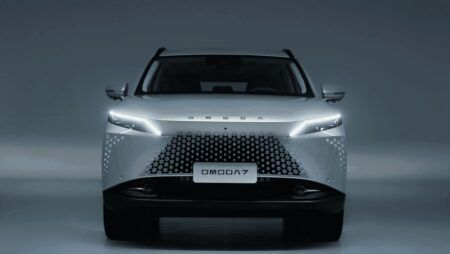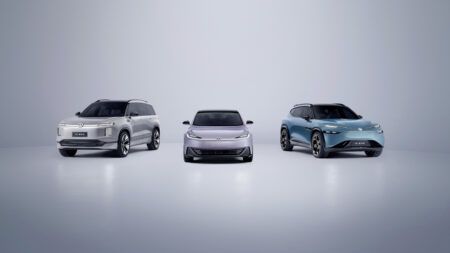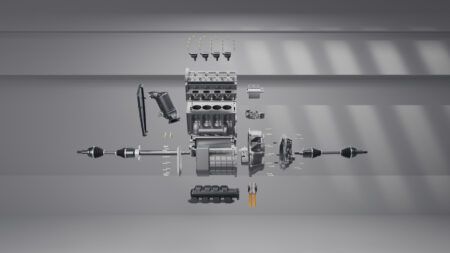In an ever-changing automotive landscape, where legacy manufacturers face new challenges from startup operations, Skoda is sticking to what it knows best. The VW-owned brand is not afraid of evolving into an EV company, but the shift won’t be revolutionary. “I sometimes ask myself who we really are, in terms of the image we want to portray – and I think we’re probably a brand for people who don’t need to have an image,” says Klaus Zellmer, the Skoda’s CEO. “Our customers don’t need to prove anything with their car – it’s rather neutral but it has a charm about it, too. If I look at our consumer profile, it’s often architects or doctors – not just people who want value for money. So, we’re probably more timeless than other brands.”
That ‘value for money’ hook is something the company always needs to be aware of, says Zellmer. “That tagline belongs to Skoda; it’s our DNA and where we came from. I would never neglect that. But if you look at the Vision 7S [concept car], we expanded our footprint with that flagship into something new. I had visitors from America for the IAA Munich show who asked why we won’t bring that car to America, because they thought it was the best car at the show. But I told them Skoda is not contemplating going to America because we have enough Volkswagen Group brands present there now. It just shows that this car will take us into a different position, in terms of branding. But it will still be based around value for money – that car will provide a lot of space, functions and our ‘Simply Clever’ details – digitally, but also in terms of the hardware.”
The price is right
Elsewhere, Zellmer is not hiding away from the fact that value for money is hard to achieve with electric cars such as Skoda’s Enyaq. “It’s sometimes the elephant in the room, but we’re very open about it,” he says. “Currently, our value for money electric car will be our A0-segment battery electric vehicle, which will be on the market in 2025. The price range will be around €25,000, which is good value for an EV.”
For other models in Skoda’s range of the future, Zellmer says Skoda won’t be forced into fast-tracking them into the market, amid more and more EVs popping up. “We’re often talking about this transformation, but we don’t need to have it tomorrow, next year or even three years,” he reasons. “With technology evolving, economies of scale being realized and our cost structures in place, we can come up with a proposal where the quality, design, reliability, and everything else is then incorporated in a car that will be below €20,000.
“Currently we cannot provide the answer for a car below €25,000 and I think the A0 BEV will be a fantastic proposal in terms of value for money,” adds Zellmer. “But we still have the Fabia, Scala and Kamiq – and the transformation takes time. Many drivers today are still looking for ICE cars and the tipping point looks like it won’t be until 2026/27. For us, that simply means that we provide choice. We’ve put a lot of effort into hybrids and our proposition is to keep the doors open.”
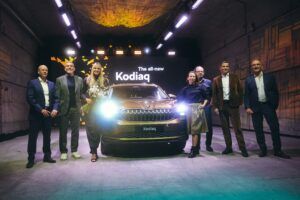 Picking up that theme, Skoda has confirmed there will be new plug-in versions of the Superb and Kodiaq, which will provide drivers with up to 100km of electric-only driving. Zellmer believes these models could play a major role in Skoda’s future. “With typical drive cycles, there are not many people I know who drive more than 100km a day. Then their typical use case is that they are driving a battery electric car, but when they want to go longer distances, they don’t have to worry about range anxiety because they can easily stop at a fuel station. The new generation of PHEVs is where they will find more acceptance from drivers.”
Picking up that theme, Skoda has confirmed there will be new plug-in versions of the Superb and Kodiaq, which will provide drivers with up to 100km of electric-only driving. Zellmer believes these models could play a major role in Skoda’s future. “With typical drive cycles, there are not many people I know who drive more than 100km a day. Then their typical use case is that they are driving a battery electric car, but when they want to go longer distances, they don’t have to worry about range anxiety because they can easily stop at a fuel station. The new generation of PHEVs is where they will find more acceptance from drivers.”
Ready to go
Zellmer describes PHEVs as a “bridging technology”, citing his wife, who chooses to drive one because she hates fuel stations – and she’s not alone. “We’re aiming for 20% PHEV sales from the new Superb and Kodiaq, which is roughly double what Europe has now.” As for how many drivers will regularly charge their PHEV, instead of those who are opting for PHEV to merely take advantage of the subsidies? Difficult to say for Skoda, says Zellmer. “Unfortunately, our cars cannot provide the data on how often they’re being charged. I’d love to know, but you can guess!” he says. “That’s a bit of a problem with subsidies because they encourage the purchase, but not the usage, which isn’t great news for the environment. Part of the Euro 7 proposals wanted to make sure we could get the data, but the problem is what you do then. Do you force that person to give back to subsidy? Or force them out of their car? However, when we talk to dealers, their experience is that although people don’t want the anxiety or to stop to charge, they also want to move away from ICE.”
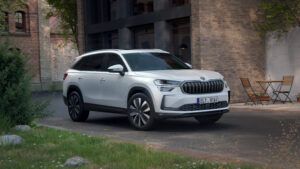 Moving into the future of EVs means looking at upcoming innovations such as bi-directional charging. “It’s a big part of the story when it comes to improving the proposition of electrical vehicles and stabilizing the grid, bi-directional charging is a great opportunity,” says Zellmer. “We recently had a very interesting symposium with our research and development department in Wolfsburg, where they showed an app that allowed you to sell back electricity from the car to the grid and there was the potential to make €1,500 a year. I find the whole idea of buying electricity, storing it in your car and then selling it at a higher price point quite fascinating. It’s something that is coming, and we need to be prepared for it. Enyaq will be the first existing car in our range that will get the technology, but I can’t tell you whether there might be a new car before that,” he teases. “But, from a technical point of view, we are ready.”
Moving into the future of EVs means looking at upcoming innovations such as bi-directional charging. “It’s a big part of the story when it comes to improving the proposition of electrical vehicles and stabilizing the grid, bi-directional charging is a great opportunity,” says Zellmer. “We recently had a very interesting symposium with our research and development department in Wolfsburg, where they showed an app that allowed you to sell back electricity from the car to the grid and there was the potential to make €1,500 a year. I find the whole idea of buying electricity, storing it in your car and then selling it at a higher price point quite fascinating. It’s something that is coming, and we need to be prepared for it. Enyaq will be the first existing car in our range that will get the technology, but I can’t tell you whether there might be a new car before that,” he teases. “But, from a technical point of view, we are ready.”
Real world driving
Škoda is using the latest iteration of its plug-in hybrid powertrain to electrify the second Kodiaq generation. It features a 110 kW (150 hp) 1.5 TSI which, together with an electric motor, delivers a system output of 150 kW (204 hp), transmitted to the front wheels via a 6‑speed DSG. The new high-voltage battery enables a purely electric range of more than 100km on the WLTP cycle. Charging at up to 11 kW on wallboxes and AC charging points as well as 50 kW at DC fast-charging points ensures rapid replenishment of the battery at home or on the road. Energy is also recuperated during braking. Despite the large battery, the Kodiaq iV offers a generous luggage capacity of 745 litres. The infotainment system includes numerous functions specific to the plug-in hybrid version – to make searches for charging stations particularly easy, for example.
“In terms of powertrains, the Kodiaq iV is the stand-out model in the second generation of our large SUV,” says Johannes Neft, Škoda Auto Board Member for Technical Development. “As the first ever Kodiaq plug-in hybrid, it features the latest version of this powertrain based on the 1.5 TSI with a generous battery capacity of 25.7 kWh. This now enables an all-electric range of more than 100km, which is plenty enough for most real-world driving.”


